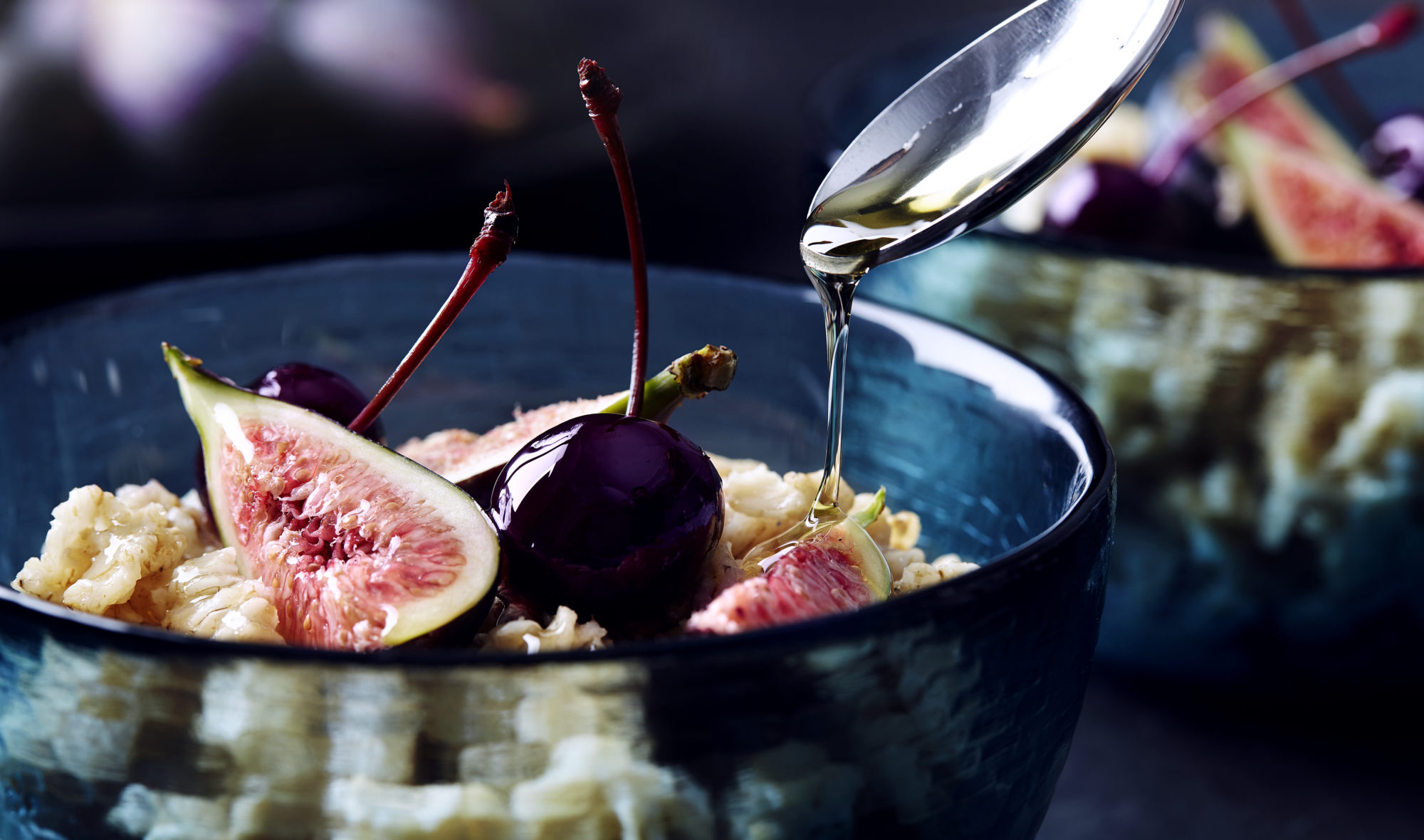
🎁 Holiday Special: SAVE 52% on the Nutrition Coach Starter Package. Limited number remaining.

🎁 Holiday Special: SAVE 52% on the Nutrition Coach Starter Package. Limited # left.

Agave syrup, also called agave nectar, comes from the concentrated sap of the agave plant, a large, spiky-leafed desert succulent native to Mexico. When it was first introduced to mainstream consumers, agave syrup was promoted as a “healthy” alternative to sugar, mainly due to its low glycemic rating. However, agave syrup contains high amounts of fructose sugars which may be more challenging for the body to metabolize than other sugars. As with all other sweeteners, agave syrup is not a problem unless it is used in excess. Although it is not a significant source of any nutrients (except sugar), this golden, viscous syrup offers a clean, neutral sweet taste, and can be used in many recipes. When it comes to the debate over whether agave syrup is healthy or not, remember that agave is a concentrated sugar just like honey, maple syrup, and cane sugar. And sugar is sugar is sugar.
Agave syrup is a liquid sweetener that’s sticky with controversy.
When it was first introduced to mainstream consumers, agave syrup, which is also called agave nectar, was touted as a “healthy” alternative to sugar, mainly due to its lower rating on the glycemic index. Since then, opinions have scattered as some argue that the high concentration of fructose sugars found in agave are potentially even more damaging to the body than other sugars.
Whether “healthier” compared to others sugars or not, agave is a concentrated sweetener, and all sweeteners are best used sparingly.
As they say, sugar is sugar is sugar.
Agave syrup is made from a desert succulent plant with large sword-like leaves. When the agave plant is harvested for syrup, the leaves are cut off, revealing a sap-rich core. The sap is then extracted from the core, and heated to concentrate the sugars. The yield of this process is a viscous, golden liquid with a neutral, highly-sweet taste.
Fun fact: Agave syrup and tequila come from the same plant. Most of the agave plants to make syrup (and tequila) live in Mexico.
Agave is a liquid sweetener, with a viscosity similar to maple syrup. Agave is sometimes distinguished by color: light (which is light golden) or dark/amber (which is a reddish mid-brown). However, many companies do not distinguish their products by color, and most products fall between that color range.
Unlike some sweeteners that have notes of fruit, caramel, or flowers, agave syrup has a very neutral, “clean” tasting sweetness. This makes it a good sweetener for recipes with delicate flavors.
Per tablespoon, agave syrup has 64 calories, and 14.1g sugar. It is not a significant source of any other nutrient.
Agave syrup can be found in some large grocery stores and most health food stores.
Although it can occasionally be found in bulk, it is usually sold packaged in plastic squeeze bottles.
Read the label and find products that only have one ingredient: agave. Pass over brands with added colors or flavoring agents.
Agave is shelf stable and can be kept in a cool, dry cupboard. If you prefer, it can also be kept in the fridge.
Follow the package directions for expiration information. Generally, most agave syrups should have a shelf life of at least a year.
Agave syrup doesn’t require any special preparation and is ready to use right out of the bottle. It can be used in any recipe that calls for a liquid sweetener, be it for baked goods, beverages, dressings, or marinades.

These protein bars are made with accessible ingredients and are easy to make - the only effort required is the passive waiting time while they set! These bars are rich in protein and high in healthy fats, making them a satisfying snack or meal replacement when you’re on-the-go.
Prep Time: 20 minutes Cook Time: 0 minutes Yield: 16-24 servings
In a large bowl, add protein powder, coconut flour, and sea salt. Stir to combine.
In a separate bowl, whisk together peanut butter, coconut oil, and agave syrup until smooth.
Add peanut butter mixture to protein powder mixture and stir until you get a thick, uniform dough.
Line an 8 inch by 8 inch pan with plastic wrap and transfer the dough into the pan. Using clean fingers, press the dough across the pan, creating a level, evenly distributed mass. Place the pan in the freezer and allow to set for 2 hours, or overnight.
Once the dough has set, remove the pan from the freezer. Remove the dough from the pan by grabbing the corners of the plastic wrap and lifting the mass out. Place the mass onto a chopping board and, using a sharp knife, cut into about 16-24 bars, depending on how big you decide to make them. Arrange the bars on a parchment paper lined baking tray, and then place in the fridge while you prepare the chocolate topping.
In a double boiler, melt the chocolate, being careful not to burn it. Once it has just melted, remove from heat. Take the bars out of the fridge and, using a spoon, drizzle the melted chocolate over the bars. Once you have used up all the chocolate, place the bars back in the fridge and allow the chocolate to harden, about 15 minutes. Then, remove the bars from the fridge and store in an airtight container in the fridge or freezer (they will lose their shape at room temperature). Enjoy.
Precision Nutrition’s Encyclopedia of Food expands every single month as we highlight new foods and showcase beautiful food photography. If you’d like to stay up to date, simply click this link. From there, we’ll send you a FREE copy of our recipe book. We’ll also let you know when new and delicious foods are added to the site.
Agave syrup, also called agave nectar, comes from the concentrated sap of the agave plant, a large, spiky-leafed desert succulent native to Mexico. When it was first introduced to mainstream consumers, agave syrup was promoted as a “healthy” alternative to sugar, mainly due to its low glycemic rating. However, agave syrup contains high amounts of fructose sugars which may be more challenging for the body to metabolize than other sugars. As with all other sweeteners, agave syrup is not a problem unless it is used in excess. Although it is not a significant source of any nutrients (except sugar), this golden, viscous syrup offers a clean, neutral sweet taste, and can be used in many recipes. When it comes to the debate over whether agave syrup is healthy or not, remember that agave is a concentrated sugar just like honey, maple syrup, and cane sugar. And sugar is sugar is sugar.